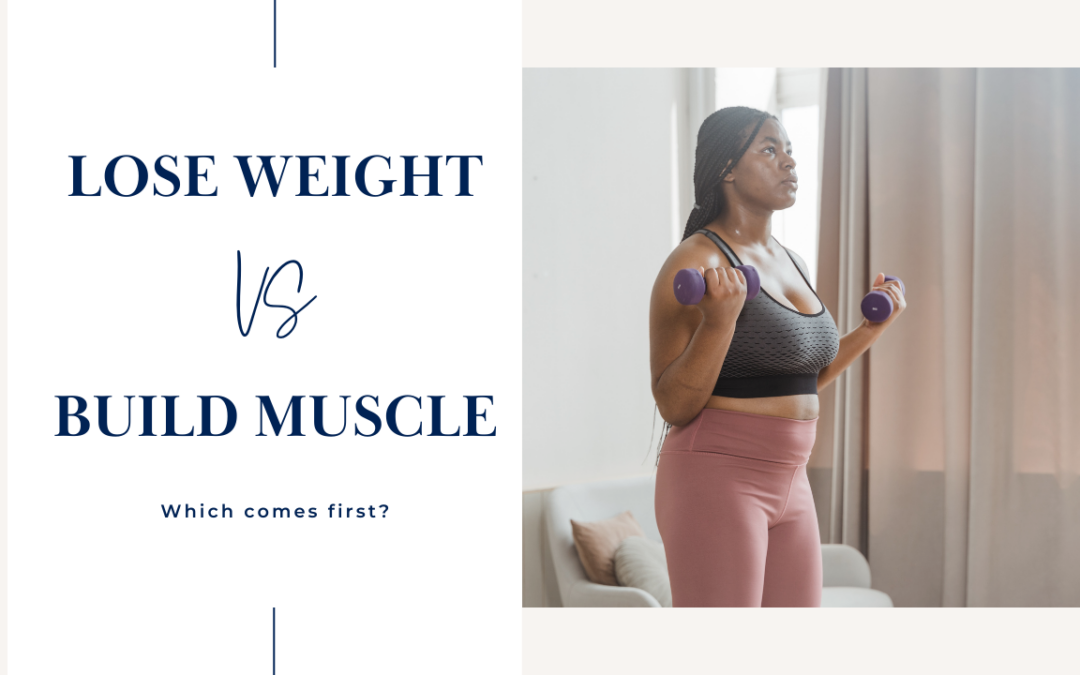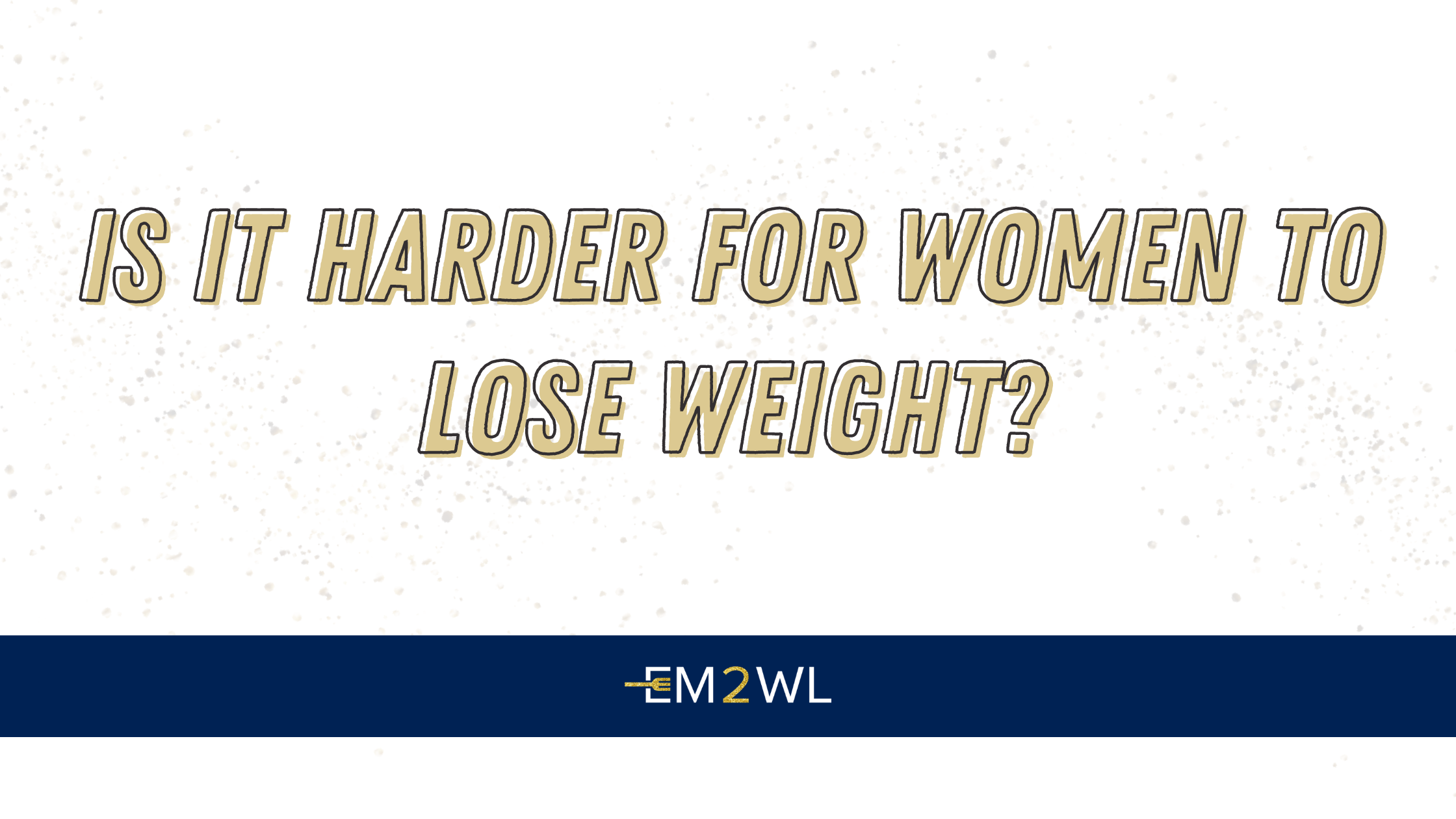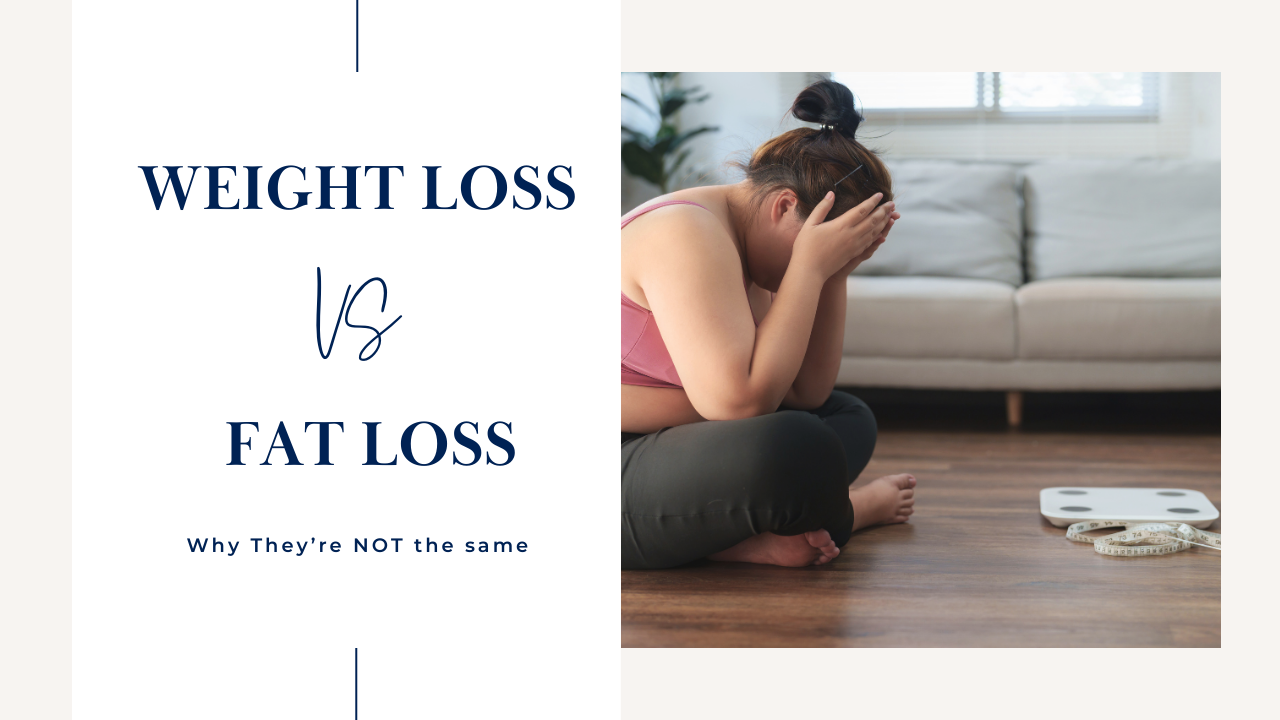Weight Loss vs. Muscle Gain: How to Know What to Focus on First
If you’ve been struggling to lose fat and build muscle at the same time, you’re not alone. Many women over 40 feel stuck in this cycle—wanting to lose weight for a leaner look while also building muscle to tone and strengthen their body.
But here’s the truth: trying to do both at the same time is inefficient. While body recomposition (losing fat while gaining muscle) is possible under certain conditions, alternating between fat loss and muscle-building phases is far more effective for most people.
So how do you know which goal to focus on first? Let’s break it down.
The Key Difference Between Fat Loss and Muscle Gain
To understand why you can’t maximize both goals at once, you need to know the basics:
- Fat loss requires a calorie deficit, meaning you eat fewer calories than your body burns so that it taps into stored fat for energy.
- Muscle gain requires a calorie surplus, meaning you eat more than your body needs so that it has enough fuel to build and repair muscle tissue.
Fat loss is a catabolic process (breaking down tissue).
Muscle gain is an anabolic process (building tissue).
These two processes contradict each other. If you’re always in a deficit, you won’t be able to build muscle efficiently. If you’re always in a surplus, you won’t shed body fat effectively.
This is why strategically alternating between the two goals is the smarter, more sustainable approach.
Why Trying to Do Both at the Same Time Isn’t Ideal
You may have heard of body recomposition—losing fat while gaining muscle at the same time. And yes, it can happen, but it’s not the most efficient strategy for most women.
Who can benefit from body recomposition?
✅ Beginners to strength training (newbie gains allow muscle growth even in a deficit).
✅ Women with higher body fat percentages (above 30% body fat).
✅ Those returning from a long break (muscle memory helps regain lost muscle).
If you don’t fall into one of these categories, trying to lose fat and build muscle at the same time usually leads to frustration. You might see slow or no progress in either direction—leading to plateaus and lack of motivation.
Bottom line: If you want noticeable changes in your body composition, it’s best to focus on one goal at a time rather than spinning your wheels trying to do both.
When to Focus on Fat Loss First
You should prioritize fat loss if:
✅ You have a higher body fat percentage (above 30%) – Losing fat first will help you see more muscle definition later.
✅ Your main goal is aesthetics – If you want a leaner, more toned look, fat loss is the first step.
✅ Your energy levels feel low – Carrying extra weight can make movement feel sluggish, and dropping excess fat can improve how you feel.
What to do:
- Eat in a moderate calorie deficit (not extreme!)
- Strength train 2–4 times per week to retain muscle.
- Focus on protein intake to preserve lean mass.
- Use cardio as a tool, but don’t overdo it—strength training should still be the foundation.
Pro Tip: If you’ve been dieting for years with little success, you may need a metabolism reset before diving into another fat loss phase.
When to Focus on Muscle Gain First
You should prioritize muscle gain if:
✅ You’ve been dieting for a long time – If you’ve been eating low calories and your progress has stalled, your metabolism likely needs a break.
✅ You feel weak or lack muscle tone – You can’t “tone” muscle that doesn’t exist, so building it first will give you a better shape when you do lose fat.
✅ Your goal is long-term sustainability – More muscle means a higher metabolism, making future fat loss easier.
What to do:
- Eat at maintenance or in a small surplus (100-300 extra calories daily).
- Strength train 3–5 times per week, focusing on progressive overload.
- Keep cardio minimal, using it for overall health rather than fat loss.
- Prioritize rest and recovery—muscle grows outside the gym, not just during workouts.
Pro Tip: Muscle-building phases don’t mean you have to “bulk.” A small calorie surplus is enough to gradually build muscle without excess fat gain.
Why Alternating Phases Works Best
Instead of trying to do both at once, a better strategy is to cycle between fat loss and muscle-building phases depending on your needs.
Example Plan:
Muscle Building Phase (3-6 months) → Focus on strength, eat slightly above maintenance, and build lean mass.
Fat Loss Phase (8-12 weeks) → Reduce calories slightly, maintain strength training, and lose excess fat.
This approach ensures consistent progress, prevents plateaus, and makes each phase more effective.
How to Decide What to Focus on First
Still unsure whether YOU should choose weight loss vs muscle gain? Use this decision guide:
➡️ If your body fat is over 30% and you want to lean out → Start with Fat Loss.
➡️ If you’re already fairly lean but lack muscle tone → Start with Muscle Gain.
➡️ If you’ve been dieting forever and feel stuck → Take a break and build muscle first.
Final Thoughts: The Smarter Approach to Body Composition
Trying to lose fat and build muscle at the same time can leave you spinning your wheels. Instead, focusing on one goal at a time—then switching phases—yields better results, faster.
By strategically alternating between muscle-building and fat loss phases, you’ll not only get better results but also make your journey more sustainable and enjoyable.
Need guidance on the best plan for YOU? Check out the Eat More 2 Weigh Less Training App, where I’ve already mapped out a full year of periodized training to help you build muscle, lose fat, and create a strong, lean body that lasts.
Discover more from Eat More 2 Weigh Less
Subscribe to get the latest posts sent to your email.




Recent Comments